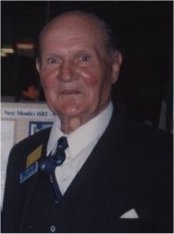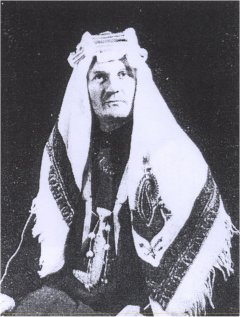G5KW Silent Key
by Ken Willis, G8KW

Ken Ellis, G5KW, died in hospital in Folkestone on June 28th, in the presence of his family and following a prolonged period of ill health. He was 92 years of age and in his lifetime had become a legendary figure among six-metre band operators worldwide. Ken spent more than 50 years actively trying to unravel the secrets of this fickle part of the spectrum and as a result added much to our knowledge of propagation at frequencies above 28 MHz.
G5KW, or to give his full title Major K.E.S. Ellis, MBE, BSc (Eng), joined the army as a boy and left it with the rank of Major, Royal Signals. He spent many years overseas, much of it in Army service in the Middle East during which time he used many aliases, among them MD5KW, SU1KE, HZ1KE, ZC4NX, ZC6NX, DL2KE and possibly more. I remember him recalling the time when, as a schoolboy, he was taken by his father to the home of a local radio amateur where the many dials, glowing lights and strange sounds issuing from the equipment "held him spellbound" and did much to determine the course of his future career and hobby.
On the very morning when I was writing a "50 Years of 50 MHz" article that was to continue the story of G5KW's remarkable six-metre activities, I was telephoned by his daughter with the sad news of her father's death. That contribution will now appear in the next issue of Six News. The following is an outline of some of Ken's achievements and exploits unrelated to 50 MHz, but it may give an indication of the depth of his knowledge and breadth of his interests.
As the end of the war approached, Ken, now a major, held the position of Senior Technical Officer in the Middle East Broadcasting Service, an information and entertainment service for the many thousands of Allied Forces still in that part of the world. He travelled widely checking the signal strength of the station and on one such trip, covering more than 3000 miles through Egypt, Palestine, Saudi Arabia, Transjordan, Iraq and Kuwait in a 15 cwt truck, he had on board a small HF band amateur transmitter and an AR 88 receiver so that at odd moments along the way he was able to give several British stations the opportunity to work some exotic prefixes. But it was for the key role of keeping this essential broadcasting service on the air that in 1947 Ken was awarded the MBE.
His next posting was to the British Military Mission to Saudi Arabia, as Communications Advisor to the Minister of Defence. In 1950, Crown Prince Faisal's son had been injured in a motor accident in Paris and for some reason the normal diplomatic communication channels were not functioning.
He never explained to me just how he did it, but he managed to "hook up" a
direct link with Paris enabling a French doctor to communicate directly with
the Crown Prince, keeping him informed of the patient's progress. Ken also
taught radio to young members if the Royal Household. He was clearly held in
esteem by his Saudi employers, but the record shows that it was for services
to
the country's General Intelligence Department that the second highest honour
in the country, the Royal Robes and Dagger, was conferred upon Major Ellis
in 1950.
On retiring from the army, Ken returned to the UK and came to Kent. I first met him at one of the RSGB VHF Conventions at the old Winning Post Hotel in Twickenham, where we discussed the fact that his name, Ken Ellis, was not dissimilar to mine (Ken Willis) and that his call, G5KW, contained my initials. So it was not surprising that on some occasions when radio amateurs were gathered together someone would ask me questions about operating MD5KW, or my life in the Middle East.
The confusion was compounded when Ken came to live in the adjacent village to mine. Thereafter whenever I telephoned his home, if Rita his wife answered, I announced myself as "Ken Two". So it will always remain.
The period July 1st 1957 to December 31st 1958 was designated International Geophysical Year (IGY), during which studies were made on a variety of propagation modes and especially their relationship with solar activity. At this time G5KW was living high up atop Well Hill, near Bromley in Kent, where he established a beacon comprising a 145.5 MHz 500 watt transmitter into a 6-over-6 element skeleton-slot antenna with a gain of 18 dB, beaming northwards. By this time Ken had become associated with the well-known amateur radio equipment company KW Electronics, established by yet another "KW", Rowley Shears G8KW, located in Dartford.

G5KW wearing the royal robes and dagger presented by the King of Saudi
Arabia.
Ken's knowledge of the Middle East, coupled with his technical ability,
resulted in him receiving several requests from the region between 1952 and 1976, for
his consultative services from both government and commercial organisations.
Fulfilling these commissions meant more time overseas, which prevented him
from settling finally in the UK and it was not until the late 1970s that he became
fully operational on six metres from the UK. But as I hope to describe in the next issue,
he soon made up for lost time.
Early in 1982 G5KW, with G4JCC and G4JLH, suggested the formation of a UK Six Metre Group, and invited anyone interested to send a £5 subscription. An initial meeting of the group was arranged to follow the main lectures at the RSGB VHF Convention on March 20th of that year. Thus was the tiny acorn of our group planted.
Ken had joined the RSGB in 1933,
transferring to life membership in 1945. On 9th August 1986 the Council of
the society voted unanimously to elect him as a Vice-President as a "small
demonstration of Council's respect and gratitude
for the considerable contributions you have made to amateur radio and for your
dedicated services to RSGB".
Ken was, to the end, totally fascinated by the propagation of radio waves at the threshold of our current knowledge and experience, as exemplified by the six-metre band. I hope to describe in the next issue the incredible lengths to which he was prepared to go to seek the results he believed were possible. I doubt very much that we shall ever see another G5KW. They don't make them like that any more.
Thanks for the memory, Ken. We shall miss you.


